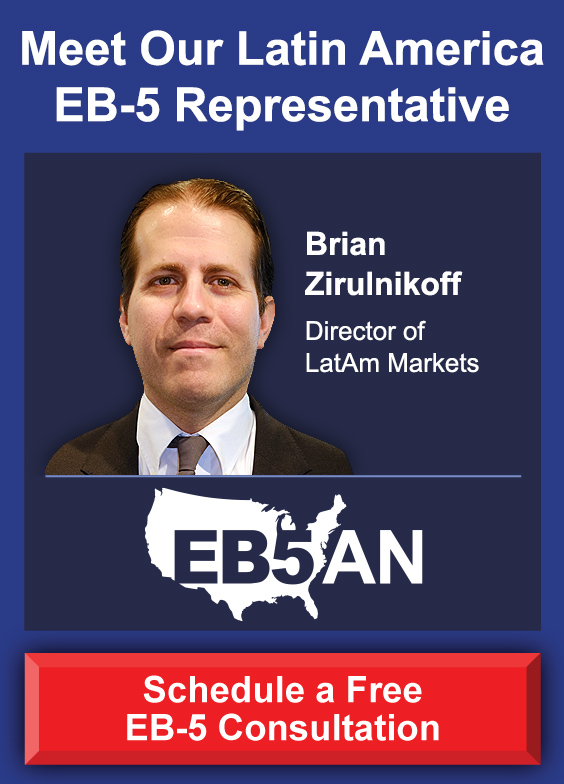June 22, 2021, marks the day a U.S. district court sent shockwaves through the EB-5 investment community. The EB-5 Modernization Rule, a controversial measure, was invalidated by the court, effectively nullifying a number of previous EB-5 program changes. This ruling was made only days prior to the expiration of the EB-5 Regional Center Program on June 30, 2021.
Though the likelihood of EB-5 Regional Center Program reauthorization is high, only direct EB-5 investments will be accepted by United States Citizenship and Immigration Services (USCIS) until regional centers are revalidated. Thus, an aspect of particular interest among EB-5 stakeholders is that the required investment amount for targeted employment area (TEA) projects has been reduced back to $500,000. The Modernization Rule had increased the minimum investment amounts to $900,000 for TEA projects and $1,800,000 for non-TEA projects. The court’s decision to invalidate the rule has already increased EB-5 program participation among foreign nationals.
Even though EB-5 Regional Center Program reauthorization seems to be on the horizon, foreign investors should make their direct EB5 investments at $500,000 while they can. This article shows how EB-5 investors are lowering their financial risks while safely investing at $500,000.
Lowering the Financial Risks
As with any other investment opportunity, EB-5 investment participants are not guaranteed a return–there is always some degree of financial risk. In fact, maintaining at-risk status is a USCIS requirement. The important thing to remember is that at-risk capital denotes funding that is subject to both gains and losses, and there are a number of ways foreign nationals can protect their investments.
Much of an investor’s protection lies within their operating agreement. Here are some ways EB-5 investors can minimize their financial risks:
- Ensure that the EB-5 investment contract clearly outlines whether the funds for a project will be returned if the investor’s I-526 petition is denied.
- If a given project does have a provision addressing the return of funds, it is important to understand the circumstances under which they will be repaid.
- Timing on the use of funds should also be addressed in an EB-5 project contract. Sometimes funds are placed in escrow until I-526 approval. Other projects release funds for immediate use.
- When a project stipulates an immediate release of funds, repayment provisions become a higher priority due to the possibility of Form I-526 denial. This makes a provision for escrowed funds a safer option overall.
Conditions such as these vary by project contract, but ultimately, no agreement may contain a binding guarantee for returning funds–even if the EB-5 investment participant is unable to secure U.S. residency. One important way an investor can ensure their capital is protected to the highest degree possible is by working with an experienced EB-5 team such as EB5AN.
In addition to guidance in EB-5 contract review, seasoned EB-5 professionals can also help foreign nationals with other issues such as fund sourcing and documentation. USCIS accepts a wide range of funding sources, including gifted funds, loans, and cryptocurrency sales, to name a few. Its main objective is to ensure that all program capital comes from legal sources, and the documents necessary to prove the legal source of funds can sometimes be complicated.
Investing At $500,000 Safely
The aforementioned court decision points to one other important consideration–the possibility of the Modernization Rule being revalidated. What happens if this ruling is overturned and the investment amounts are raised once again?
In light of this possibility, one strategy would be to go ahead and invest $900,000 into an escrow account for an EB-5 project, but only schedule a release of $500,000 upon Form I-526 approval. This option allows for two I-526 submissions at once. Each petition would report a different investment amount: $500,000 and $900,000, respectively. No matter which direction the Modernization Rule case goes, EB5 investment participants can be sure they meet the minimum program requirements.
Every investment is unique, and this is only one strategy for navigating what can often be unsure waters. An experienced EB-5 legal professional can offer guidance and advice tailored to each investor’s personal situation. Whatever the scenario, though, the EB5 investment path to obtaining a U.S. green card is certainly worth the risk. EB5AN is always available to help foreign nationals identify the optimal EB-5 investment opportunities.








